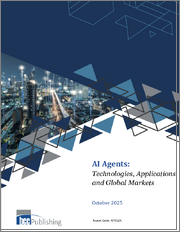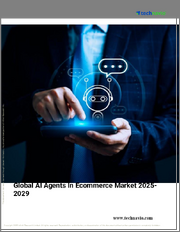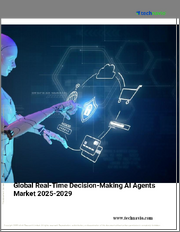
|
시장보고서
상품코드
1798036
세계의 자율형 AI 및 자율형 에이전트 시장 : 예측 - 유형별, 컴포넌트별, 전개별, 기술별, 최종 사용자별, 지역별 분석(-2032년)Autonomous AI and Autonomous Agents Market Forecasts to 2032 - Global Analysis By Type (Autonomous AI and Autonomous Agents), Component (Hardware, Software, Services), Deployment, Technology, End User and By Geography |
||||||
Stratistics MRC에 따르면 세계의 자율형 AI 및 자율형 에이전트 시장은 2025년에 119억 3,000만 달러로 추정되고, 예측 기간 동안 CAGR 44.8%로 성장할 전망이며, 2032년에는 1,592억 5,000만 달러에 이를 것으로 예측되고 있습니다.
자율형 AI란 인간의 개입 없이 독립적으로 작업을 수행하고, 의사결정을 하며, 변화하는 환경에 적응할 수 있는 인공지능 시스템을 말합니다. 이러한 시스템은 머신러닝, 추론 및 의사 결정 알고리즘을 활용하여 동적 환경에서 작동하여 성능과 효율성을 최적화합니다. 자율형 에이전트는 사용자와 조직을 대신하여 행동하고, 환경을 인식하며, 정보를 해석하고, 미리 정의된 목표를 달성하기 위해 행동을 수행하도록 설계된 자율형 AI의 특정 구현입니다. 소프트웨어 봇에서 로봇 시스템에 이르기까지 다양한 유형이 있으며 상호작용 및 피드백에서 지속적으로 학습함으로써 결과를 개선하고 오류를 줄이고 복잡한 실제 세계 시나리오에서 안정적으로 작동합니다.
산업의 채용 증가
제조업에서는 자율형 시스템을 활용하여 생산 효율을 최적화하고 운영 비용을 절감하고 있습니다. 물류 및 공급망에서 AI 에이전트는 재고 관리를 간소화하고 배송 정확도를 향상시킵니다. 헬스케어 산업에서는 진단, 환자 모니터링, 맞춤 치료 계획에 자율적인 AI를 활용하고 있습니다. 소매업 및 전자상거래 플랫폼은 AI 에이전트를 채택하여 고객 경험을 향상시키고 지원을 자동화합니다. 전반적으로 자율 기술의 산업 횡단 통합은 수요, 혁신 및 시장 확대를 촉진합니다.
규제 및 윤리적 우려
AI 도입에 관한 정부의 엄격한 규제는 제품 출시를 늦추고 컴플라이언스 비용을 증가시키고 있습니다. 국가에 따라 시책이 다르기 때문에 세계 기업에서 시장의 분단과 운영상의 과제가 생깁니다. 프라이버시 침해와 편향된 의사결정과 같은 윤리적 우려는 소비자의 신뢰 및 채용을 낮추고 있습니다. AI 오류나 사고가 발생할 경우 책임 문제는 개발자와 사용자에게 법적 위험을 초래합니다. 전반적으로 이러한 규제와 윤리적 장애물은 혁신을 늦추고 시장 확대를 제한하며 비즈니스 복잡성을 증가시킵니다.
IoT 및 로봇과의 통합
커넥티드 디바이스는 실용적인 인사이트를 제공하여 자율형 에이전트가 보다 빠르고 정확한 의사 결정을 내릴 수 있도록 합니다. 로보틱스의 통합은 산업에 관계없이 반복적이고 복잡한 작업을 자동화함으로써 업무 효율성을 높입니다. IoT와 AI를 결합한 시스템은 예측 유지 보수를 개선하고 다운타임과 운영 비용을 절감합니다. 이 시너지 효과는 제조, 물류, 헬스케어, 스마트 시티의 도입을 촉진합니다. 전반적으로 보다 스마트하고 적응성이 높은 자율적 솔루션을 창출함으로써 혁신, 확장성 및 시장 성장이 가속화됩니다.
데이터 프라이버시 및 보안 문제
GDPR(EU 개인정보보호규정) 및 CCPA와 같은 엄격한 규정은 이러한 기술을 도입하는 기업의 컴플라이언스 비용을 증가시키고 있습니다. 데이터 유출을 두려워 할수록 고객의 신뢰가 떨어지고 헬스케어 및 금융과 같은 기밀성이 높은 부문에서의 도입이 지연됩니다. AI 시스템의 사이버 보안 취약점은 악의적인 공격과 운영 장애의 위험을 증가시킵니다. 기업은 개인 데이터의 잘못된 취급과 관련된 잠재적인 법적 책임으로 인해 혁신을 지연시킬 수 있습니다. 전반적으로 이러한 문제는 비용 증가, 채용 제한, 기술 발전의 둔화로 인해 시장 성장의 장벽이 됩니다.
COVID-19의 영향
COVID-19의 팬데믹은 조직이 한계와 노동력 한계 내에서 업무를 유지하려고 했기 때문에 자율형 AI 및 자율형 에이전트의 채용을 크게 가속화했습니다. 헬스케어, 물류, 원격조작에서 지능형 자동화에 대한 수요가 높아져 효율성, 안전성, 비용 절감의 장점이 강조되었습니다. 공급망의 혼란과 비즈니스 우선순위 변화는 인간의 개입을 최소화하고 의사결정할 수 있는 자율 시스템에 투자를 촉구했습니다. 그러나 기술 도입 지연, 예산 삭감, 규제 과제 등이 시장 확대를 일시적으로 지연시켰습니다. 전반적으로 팬데믹은 탄력성과 비즈니스 연속성을 위한 자율적 인공지능의 전략적 중요성을 부각시켰습니다.
예측 기간 동안 소프트웨어 부문이 최대가 될 전망
소프트웨어 부문은 자율적인 의사 결정을 가능하게 하는 첨단 알고리즘과 머신러닝 모델을 실현함으로써 예측 기간 동안 최대 시장 점유율을 차지할 것으로 예측됩니다. 실시간 데이터 처리 플랫폼을 제공하여 시스템의 정확성 및 효율성을 향상시킵니다. 소프트웨어 솔루션은 기존 IT와 운영 인프라 간의 원활한 통합을 촉진합니다. 지속적인 업데이트와 AI 모델의 개선으로 산업을 넘어서는 적응성이 향상됩니다. 전반적으로 소프트웨어는 백본 역할을 하며 자율 시스템의 전개와 채택을 세계적으로 가속화합니다.
예측 기간 동안 생산 부문의 CAGR이 가장 높을 것으로 예상
예측 기간 동안 반복적이고 복잡한 생산 작업을 자동화하고 업무 효율성을 높임으로써 제조 부문이 가장 높은 성장률을 보일 것으로 예측됩니다. 또한, 예지 보전을 가능하게 하고, 다운타임을 줄이며, 비용을 절감합니다. 자율형 에이전트는 공급망 관리를 최적화하고 적시 배송 및 자원 할당을 보장합니다. AI를 활용한 품질 관리는 제품 일관성을 향상시키고 오류를 줄입니다. 또한 스마트 공장과 Industry 4.0 이니셔티브의 채택 확대가 시장 성장을 더욱 가속화하고 있습니다.
최대 점유율을 가진 지역
예측 기간 동안 북미는 선진 연구, 높은 기업 인공지능 도입, 방위, 헬스케어, 운송 등의 분야에서 자율 시스템 수요에 힘입어 최대 시장 점유율을 차지할 것으로 예측됩니다. 미국과 캐나다는 자율 주행 차량, AI 주도 분석, 지능형 자동화 플랫폼의 선구자입니다. 주요 기술로는 AI 오케스트레이션, 강화 학습, 클라우드 기반 자율 프레임워크 등이 있습니다. 하이테크 기업과 학술 기관의 파트너십이 혁신을 촉진합니다. 윤리적인 우려, 시스템의 복잡성, 사이버 보안 위험이 채택의 장벽이 되고 있지만, 시장의 성장은 바람직한 규제 시책에 의해 지원되고 있습니다.
CAGR이 가장 높은 지역
예측 기간 동안 아시아태평양은 중국, 일본, 인도, 한국의 제조, 물류, 스마트 시티 프로젝트에서 AI의 강력한 채택으로 가장 높은 CAGR을 나타낼 것으로 예측됩니다. 인더스트리 4.0과 자동화에 대한 정부 이니셔티브 증가와 AI 신흥 기업에 대한 투자가 수요를 이끌고 있습니다. 새로운 동향으로는 자율형 로봇, AI를 활용한 공급망 관리, AI를 활용한 예지보전 등을 들 수 있습니다. 기술 공급자 및 현지 기업 간의 협업이 증가하고 있으며 시장 성장을 가속하고 있습니다.
무료 맞춤형 서비스
이 보고서를 구독하는 고객은 다음 무료 맞춤설정 옵션 중 하나를 사용할 수 있습니다.
- 기업 프로파일
- 추가 시장 진출기업의 종합적 프로파일링(3개사까지)
- 주요 기업의 SWOT 분석(3개사까지)
- 지역 세분화
- 고객의 관심에 응한 주요국 시장 추정, 예측 및 CAGR(주 : 타당성 확인에 따름)
- 경쟁 벤치마킹
- 제품 포트폴리오, 지리적 존재, 전략적 제휴를 통한 주요 기업 벤치마킹
목차
제1장 주요 요약
제2장 서문
- 개요
- 이해관계자
- 조사 범위
- 조사 방법
- 데이터 마이닝
- 데이터 분석
- 데이터 검증
- 조사 접근
- 조사 자료
- 1차 조사 자료
- 2차 조사 자료
- 전제조건
제3장 시장 동향 분석
- 서문
- 성장 촉진요인
- 성장 억제요인
- 기회
- 위협
- 기술 분석
- 최종 사용자 분석
- 신흥 시장
- COVID-19의 영향
제4장 Porter's Five Forces 분석
- 공급기업의 협상력
- 구매자의 협상력
- 대체품의 위협
- 신규 참가업체의 위협
- 경쟁 기업간 경쟁 관계
제5장 세계의 자율형 AI 및 자율형 에이전트 시장 : 유형별
- 서문
- 자율형 AI
- 자율형 에이전트
제6장 세계의 자율형 AI 및 자율형 에이전트 시장 : 컴포넌트별
- 서문
- 하드웨어
- 센서 및 액추에이터
- 프로세서 및 칩셋
- 소프트웨어
- AI 알고리즘 및 모델
- 플랫폼 및 프레임워크
- 서비스
- 컨설팅
- 통합 및 전개
- 유지보수 및 지원
제7장 세계의 자율형 AI 및 자율형 에이전트 시장 : 전개별
- 서문
- 클라우드 기반
- 온프레미스
제8장 세계의 자율형 AI 및 자율형 에이전트 시장 : 기술별
- 서문
- 머신러닝
- 자연언어처리(NLP)
- 컴퓨터 비전
- 강화 학습
- 로보틱스 프로세스 자동화(RPA)
- 기타
제9장 세계의 자율형 AI 및 자율형 에이전트 시장 : 최종 사용자별
- 서문
- 헬스케어
- 자동차
- 소매
- 은행, 금융서비스 및 보험
- 제조
- 방어 보안
- 기타
제10장 세계의 자율형 AI 및 자율형 에이전트 시장 : 지역별
- 서문
- 북미
- 미국
- 캐나다
- 멕시코
- 유럽
- 독일
- 영국
- 이탈리아
- 프랑스
- 스페인
- 기타 유럽
- 아시아태평양
- 일본
- 중국
- 인도
- 호주
- 뉴질랜드
- 한국
- 기타 아시아태평양
- 남미
- 아르헨티나
- 브라질
- 칠레
- 기타 남미
- 중동 및 아프리카
- 사우디아라비아
- 아랍에미리트(UAE)
- 카타르
- 남아프리카
- 기타 중동 및 아프리카
제11장 주요 개발
- 계약, 파트너십, 협업 및 합작투자
- 인수 및 합병
- 신제품 발매
- 사업 확대
- 기타 주요 전략
제12장 기업 프로파일링
- Microsoft
- IBM
- Amazon
- Oracle
- SAP
- Salesforce
- NVIDIA
- OpenAI
- Anthropic
- Meta
- ServiceNow
- Aisera
- Avanade
- PwC
- UiPath
- Automation Anywhere
- Mistral AI
According to Stratistics MRC, the Global Autonomous AI and Autonomous Agents Market is accounted for $11.93 billion in 2025 and is expected to reach $159.25 billion by 2032 growing at a CAGR of 44.8% during the forecast period. Autonomous AI refers to artificial intelligence systems capable of performing tasks independently, making decisions, and adapting to changing environments without human intervention. These systems leverage machine learning, reasoning, and decision-making algorithms to operate in dynamic settings, optimizing performance and efficiency. Autonomous agents are specific implementations of autonomous AI designed to act on behalf of users or organizations, perceiving their environment, interpreting information, and executing actions to achieve predefined goals. They can range from software bots to robotic systems, continuously learning from interactions and feedback to improve outcomes, reduce errors, and operate reliably in complex, real-world scenarios.
Market Dynamics:
Driver:
Rising adoption in industries
Manufacturing sectors are using autonomous systems to optimize production efficiency and reduce operational costs. In logistics and supply chain, AI agents streamline inventory management and improve delivery accuracy. The healthcare industry leverages autonomous AI for diagnostics, patient monitoring, and personalized treatment plans. Retail and e-commerce platforms adopt AI agents to enhance customer experience and automate support. Overall, cross-industry integration of autonomous technologies fuels demand, innovation, and market expansion.
Restraint:
Regulatory and ethical concerns
Strict government regulations on AI deployment delay product launches and increase compliance costs. Varying policies across countries create market fragmentation and operational challenges for global companies. Ethical concerns, such as privacy violations and biased decision-making, reduce consumer trust and adoption. Liability issues in case of AI errors or accidents raise legal risks for developers and users. Overall, these regulatory and ethical hurdles slow innovation, limit market expansion, and increase operational complexity.
Opportunity:
Integration with IoT and robotics
Connected devices provide actionable insights, allowing autonomous agents to make faster and more accurate decisions. Robotics integration enhances operational efficiency by automating repetitive and complex tasks across industries. Combined IoT-AI systems improve predictive maintenance, reducing downtime and operational costs. This synergy drives adoption in manufacturing, logistics, healthcare, and smart cities. Overall, it accelerates innovation, scalability, and market growth by creating smarter, more adaptive autonomous solutions.
Threat:
Data privacy and security issues
Strict regulations like GDPR and CCPA increase compliance costs for companies deploying these technologies. Fear of data breaches reduces customer trust and slows adoption in sensitive sectors such as healthcare and finance. Cybersecurity vulnerabilities in AI systems raise the risk of malicious attacks and operational failures. Companies may delay innovation due to potential legal liabilities linked to mishandling personal data. Overall, these issues create barriers to market growth by increasing costs, limiting adoption, and slowing technological advancements.
Covid-19 Impact:
The Covid-19 pandemic significantly accelerated the adoption of autonomous AI and autonomous agents as organizations sought to maintain operations amid restrictions and workforce limitations. Demand increased for intelligent automation in healthcare, logistics, and remote operations, highlighting efficiency, safety, and cost-saving benefits. Supply chain disruptions and shifting business priorities prompted investments in autonomous systems capable of decision-making with minimal human intervention. However, delays in technology deployment, reduced budgets, and regulatory challenges temporarily slowed market expansion. Overall, the pandemic underscored the strategic importance of autonomous AI for resilience and operational continuity.
The software segment is expected to be the largest during the forecast period
The software segment is expected to account for the largest market share during the forecast period by enabling advanced algorithms and machine learning models that power autonomous decision-making. It provides the platforms for real-time data processing, improving system accuracy and efficiency. Software solutions facilitate seamless integration with existing IT and operational infrastructures. Continuous updates and AI model improvements enhance adaptability across industries. Overall, software acts as the backbone, accelerating deployment and adoption of autonomous systems globally.
The manufacturing segment is expected to have the highest CAGR during the forecast period
Over the forecast period, the manufacturing segment is predicted to witness the highest growth rate by automating repetitive and complex production tasks, increasing operational efficiency. It enables predictive maintenance, reducing downtime and saving costs. Autonomous agents optimize supply chain management, ensuring timely delivery and resource allocation. AI-powered quality control improves product consistency and reduces errors. Moreover, growing adoption of smart factories and Industry 4.0 initiatives further accelerates market growth.
Region with largest share:
During the forecast period, the North America region is expected to hold the largest market share fuelled by advanced research, high enterprise AI adoption, and demand for autonomous systems in sectors like defense, healthcare, and transportation. The U.S. and Canada are pioneers in autonomous vehicles, AI-driven analytics, and intelligent automation platforms. Key technologies include AI orchestration, reinforcement learning, and cloud-based autonomous frameworks. Partnerships between tech companies and academic institutions promote innovation. Market growth is supported by favourable regulatory policies, although ethical concerns, system complexity, and cybersecurity risks pose adoption barriers.
Region with highest CAGR:
Over the forecast period, the Asia Pacific region is anticipated to exhibit the highest CAGR due to strong adoption of AI in manufacturing, logistics, and smart city projects across China, Japan, India, and South Korea. Rising government initiatives for Industry 4.0 and automation, along with investments in AI startups, are driving demand. Emerging trends include autonomous robotics, AI-powered supply chain management, and AI-driven predictive maintenance. Increasing collaborations between technology providers and local enterprises are fostering market growth.
Key players in the market
Some of the key players in Autonomous AI and Autonomous Agents Market include Microsoft, IBM, Amazon, Google, Oracle, SAP, Salesforce, NVIDIA, OpenAI, Anthropic, Meta, ServiceNow, Aisera, Avanade, PwC, UiPath, Automation Anywhere and Mistral AI.
Key Developments:
In July 2025, Amazon introduced Amazon Bedrock AgentCore, a comprehensive suite designed to facilitate the deployment and management of AI agents. This platform provides tools and infrastructure to support the development of autonomous agents capable of executing complex tasks across various domains.
In January 2025, Microsoft and PwC announced a strategic collaboration aimed at transforming industries with AI agents. This partnership focuses on harnessing AI's potential to drive business value, enhance customer engagement, and streamline operations across various sectors.
In May 2024, IBM and Salesforce announced an expanded partnership to provide pre-built AI agents and tools for organizations. This collaboration aims to enable businesses to transform sales and service processes with AI while maintaining control over their IT environments.
Types Covered:
- Autonomous AI
- Autonomous Agents
Components Covered:
- Hardware
- Software
- Services
Deployments Covered:
- Cloud-based
- On-premise
Technologies Covered:
- Machine Learning
- Natural Language Processing (NLP)
- Computer Vision
- Reinforcement Learning
- Robotics Process Automation (RPA)
- Other Technologies
End Users Covered:
- Healthcare
- Automotive
- Retail
- Banking, Financial Services, Insurance
- Manufacturing
- Defense & Security
- Other End Users
Regions Covered:
- North America
- US
- Canada
- Mexico
- Europe
- Germany
- UK
- Italy
- France
- Spain
- Rest of Europe
- Asia Pacific
- Japan
- China
- India
- Australia
- New Zealand
- South Korea
- Rest of Asia Pacific
- South America
- Argentina
- Brazil
- Chile
- Rest of South America
- Middle East & Africa
- Saudi Arabia
- UAE
- Qatar
- South Africa
- Rest of Middle East & Africa
What our report offers:
- Market share assessments for the regional and country-level segments
- Strategic recommendations for the new entrants
- Covers Market data for the years 2024, 2025, 2026, 2028, and 2032
- Market Trends (Drivers, Constraints, Opportunities, Threats, Challenges, Investment Opportunities, and recommendations)
- Strategic recommendations in key business segments based on the market estimations
- Competitive landscaping mapping the key common trends
- Company profiling with detailed strategies, financials, and recent developments
- Supply chain trends mapping the latest technological advancements
Free Customization Offerings:
All the customers of this report will be entitled to receive one of the following free customization options:
- Company Profiling
- Comprehensive profiling of additional market players (up to 3)
- SWOT Analysis of key players (up to 3)
- Regional Segmentation
- Market estimations, Forecasts and CAGR of any prominent country as per the client's interest (Note: Depends on feasibility check)
- Competitive Benchmarking
- Benchmarking of key players based on product portfolio, geographical presence, and strategic alliances
Table of Contents
1 Executive Summary
2 Preface
- 2.1 Abstract
- 2.2 Stake Holders
- 2.3 Research Scope
- 2.4 Research Methodology
- 2.4.1 Data Mining
- 2.4.2 Data Analysis
- 2.4.3 Data Validation
- 2.4.4 Research Approach
- 2.5 Research Sources
- 2.5.1 Primary Research Sources
- 2.5.2 Secondary Research Sources
- 2.5.3 Assumptions
3 Market Trend Analysis
- 3.1 Introduction
- 3.2 Drivers
- 3.3 Restraints
- 3.4 Opportunities
- 3.5 Threats
- 3.6 Technology Analysis
- 3.7 End User Analysis
- 3.8 Emerging Markets
- 3.9 Impact of Covid-19
4 Porters Five Force Analysis
- 4.1 Bargaining power of suppliers
- 4.2 Bargaining power of buyers
- 4.3 Threat of substitutes
- 4.4 Threat of new entrants
- 4.5 Competitive rivalry
5 Global Autonomous AI and Autonomous Agents Market, By Type
- 5.1 Introduction
- 5.2 Autonomous AI
- 5.3 Autonomous Agents
6 Global Autonomous AI and Autonomous Agents Market, By Component
- 6.1 Introduction
- 6.2 Hardware
- 6.2.1 Sensors & Actuators
- 6.2.2 Processors & Chipsets
- 6.3 Software
- 6.3.1 AI Algorithms & Models
- 6.3.2 Platforms & Frameworks
- 6.4 Services
- 6.4.1 Consulting
- 6.4.2 Integration & Deployment
- 6.4.3 Maintenance & Support
7 Global Autonomous AI and Autonomous Agents Market, By Deployment
- 7.1 Introduction
- 7.2 Cloud-based
- 7.3 On-premise
8 Global Autonomous AI and Autonomous Agents Market, By Technology
- 8.1 Introduction
- 8.2 Machine Learning
- 8.3 Natural Language Processing (NLP)
- 8.4 Computer Vision
- 8.5 Reinforcement Learning
- 8.6 Robotics Process Automation (RPA)
- 8.7 Other Technologies
9 Global Autonomous AI and Autonomous Agents Market, By End User
- 9.1 Introduction
- 9.2 Healthcare
- 9.3 Automotive
- 9.4 Retail
- 9.5 Banking, Financial Services, Insurance
- 9.6 Manufacturing
- 9.7 Defense & Security
- 9.8 Other End Users
10 Global Autonomous AI and Autonomous Agents Market, By Geography
- 10.1 Introduction
- 10.2 North America
- 10.2.1 US
- 10.2.2 Canada
- 10.2.3 Mexico
- 10.3 Europe
- 10.3.1 Germany
- 10.3.2 UK
- 10.3.3 Italy
- 10.3.4 France
- 10.3.5 Spain
- 10.3.6 Rest of Europe
- 10.4 Asia Pacific
- 10.4.1 Japan
- 10.4.2 China
- 10.4.3 India
- 10.4.4 Australia
- 10.4.5 New Zealand
- 10.4.6 South Korea
- 10.4.7 Rest of Asia Pacific
- 10.5 South America
- 10.5.1 Argentina
- 10.5.2 Brazil
- 10.5.3 Chile
- 10.5.4 Rest of South America
- 10.6 Middle East & Africa
- 10.6.1 Saudi Arabia
- 10.6.2 UAE
- 10.6.3 Qatar
- 10.6.4 South Africa
- 10.6.5 Rest of Middle East & Africa
11 Key Developments
- 11.1 Agreements, Partnerships, Collaborations and Joint Ventures
- 11.2 Acquisitions & Mergers
- 11.3 New Product Launch
- 11.4 Expansions
- 11.5 Other Key Strategies
12 Company Profiling
- 12.1 Microsoft
- 12.2 IBM
- 12.3 Amazon
- 12.4 Google
- 12.5 Oracle
- 12.6 SAP
- 12.7 Salesforce
- 12.8 NVIDIA
- 12.9 OpenAI
- 12.10 Anthropic
- 12.11 Meta
- 12.12 ServiceNow
- 12.13 Aisera
- 12.14 Avanade
- 12.15 PwC
- 12.16 UiPath
- 12.17 Automation Anywhere
- 12.18 Mistral AI



















